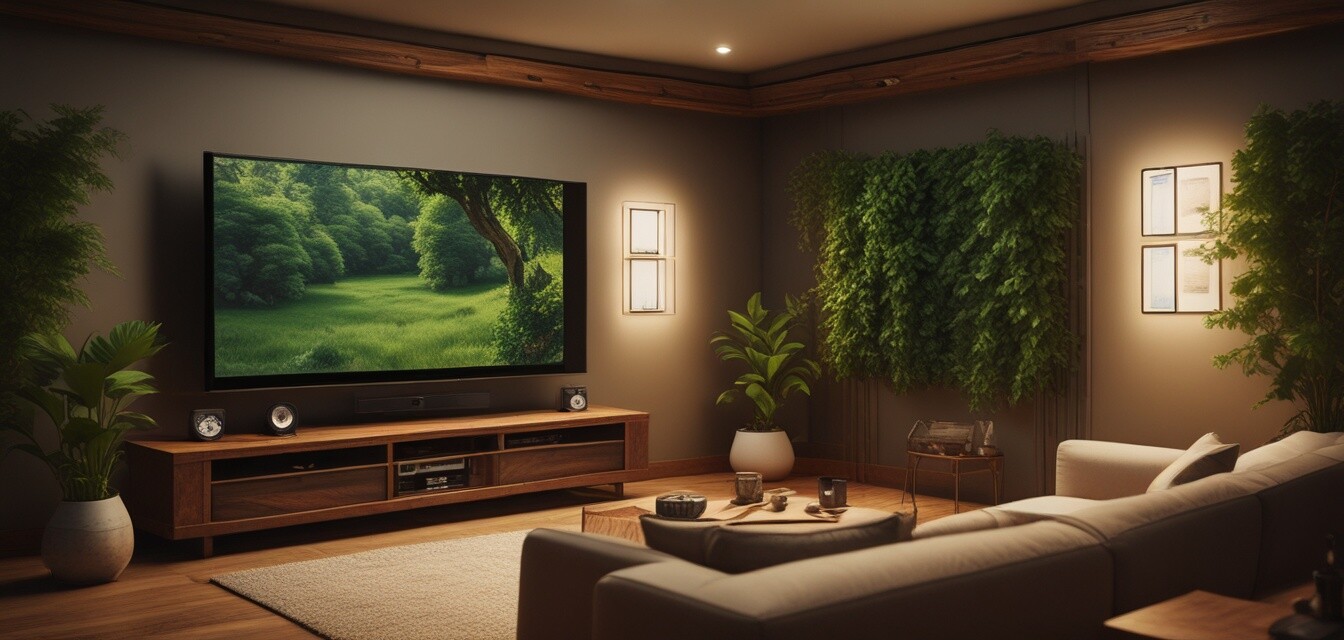
Sustainable solutions for home theater spaces
Key Takeaways
- Choose eco-friendly materials for your TV stand.
- Incorporate modular designs for flexibility and space efficiency.
- Consider corner and floating TV stands to maximize room usage.
- Maintain sustainable practices to enhance the longevity of furniture.
- Explore DIY projects to create personalized, eco-friendly setups.
Creating a sustainable home theater involves more than just selecting the best audio and visual equipment. It also requires thoughtful consideration of the furniture that will support your cinematic experience. This guide explores how you can choose eco-friendly furniture, with a particular focus on selecting the perfect TV stand that aligns with a sustainable lifestyle.
Understanding sustainable materials
When it comes to furniture—especially items like TV stands—deciding on sustainable materials is crucial. Here are some materials that contribute to eco-friendly practices:
| Material | Benefits |
|---|---|
| Bamboo | Fast-growing, renewable, and strong. |
| Reclaimed wood | Reduces deforestation, adds unique character. |
| Recycled plastic | Helps reduce landfill waste and can be molded into stylish designs. |
| Natural fibers (like hemp or jute) | Biodegradable, renewable, and often require fewer resources to produce. |
Choosing your TV stand
Selecting a TV stand may seem straightforward, but there are several eco-friendly options to consider:
- Corner TV stands: Ideal for maximizing space in smaller rooms.
- Floating TV stands: Create a modern look while saving floor space.
- Entertainment consoles: Combine storage and display needs in one stylish package.
- Modular TV stands: Allow for flexibility and customization according to your needs.
- Metal & glass TV stands: Often recyclable materials that offer a sleek aesthetic.
Benefits of eco-friendly furniture
Investing in sustainable furniture such as eco-friendly TV stands comes with various advantages:
Pros
- Reduces your carbon footprint.
- Supports sustainable businesses.
- Creates a healthier home environment.
- Often more durable than conventional furniture.
Cons
- May require a larger initial investment.
- Availability may be limited in some areas.
Tips for maintaining sustainable furniture
Tips for beginners
- Regularly clean your furniture with natural products.
- Keep furniture out of direct sunlight to prevent fading.
- Use coasters and placemats to reduce wear.
- Repair damaged furniture instead of replacing it.
- Donate or recycle when it's time to part with furniture.
Incorporating technology
Consider how technology can complement your sustainable home theater. Smart gadgets can help minimize energy consumption. Here are some ideas:
- Smart TVs that adjust brightness based on ambient light.
- Energy-efficient audio systems that use less power.
- Remote-controlled lighting systems that save electricity.
Do-it-yourself projects
If you're crafty, consider DIY projects to enhance your sustainable space:
- Build a custom TV stand from reclaimed wood.
- Repurpose old furniture into a TV storage unit.
- Create decorative shelves from upcycled materials.
Final thoughts
Creating a sustainable home theater is both an environmentally-conscious choice and a smart practical decision. By selecting eco-friendly materials, investing in versatile furniture, and incorporating technology, you can create a stunning home entertainment space that aligns with your values. Remember to explore our other resources like corner TV stands and modular TV stands to enhance your sustainable living journey!
Explore more
Continue your journey towards an eco-friendly lifestyle by checking out our category on Eco-Friendly Living for further insights and recommendations.